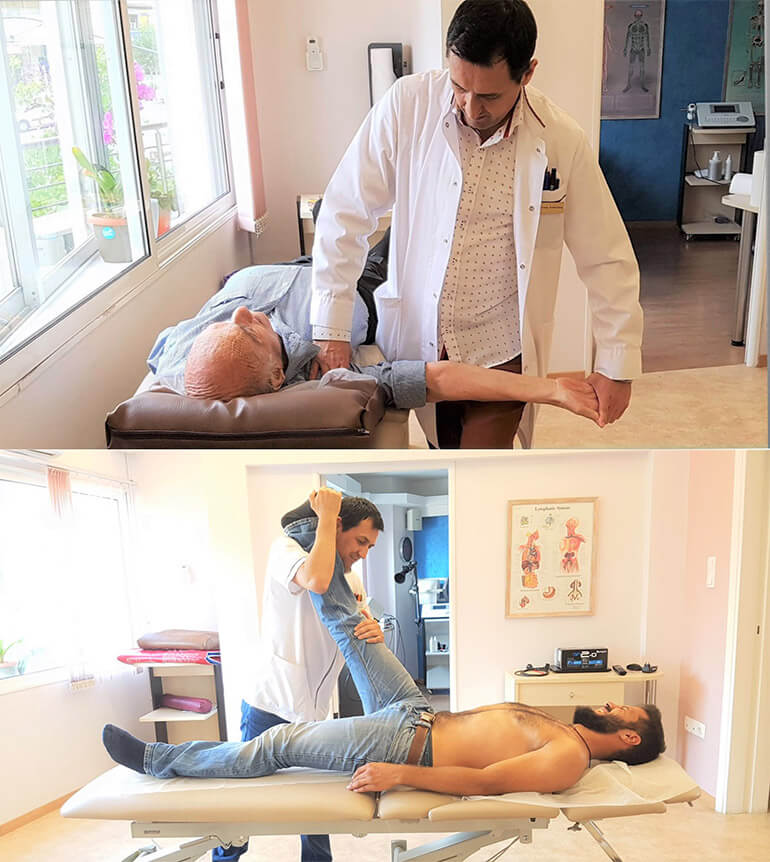Neural mobilization
Stretching of peripheral and central nervous system.

Based on the evaluation tests we determine the root of the problem (centrally or peripherally).
Applying flexion-extension or lateral flexion of the head, we can also evaluate the central nervous system, the hard meninges of the spinal cord.
By manipulating the extremities, we affect the peripheral nervous system.
By applying both of those techniques, we achieve the total stretching of the nervous system.
E.g. a nerve injury at the foramen level (the point where the nerve exits the spinal canal) leads to the above connective tissue developing at this region due to injury exerting even more pressure on the nerve. The aim of the nerve tissue mobilization is to "widen" the point of the injury and improve local elasticity to reduce local pressure on that specific point of the nerve.
The slump test is, in principle, a diagnostic tool, but can also be used therapeutically in cases of radiculitis (dilation of the central and peripheral nervous system).
- Middle and ulnar nerve in the upper extremities.
- Tibial and peroneal nerve in the lower extremities.
- intervertebral disc herniation
- radiculitis
- peripheral nerve palsies
- spinal cord problems/dysfunctions
- stroke, cerebral palsy
- M.S. (Multiple Sclerosis)
- headaches